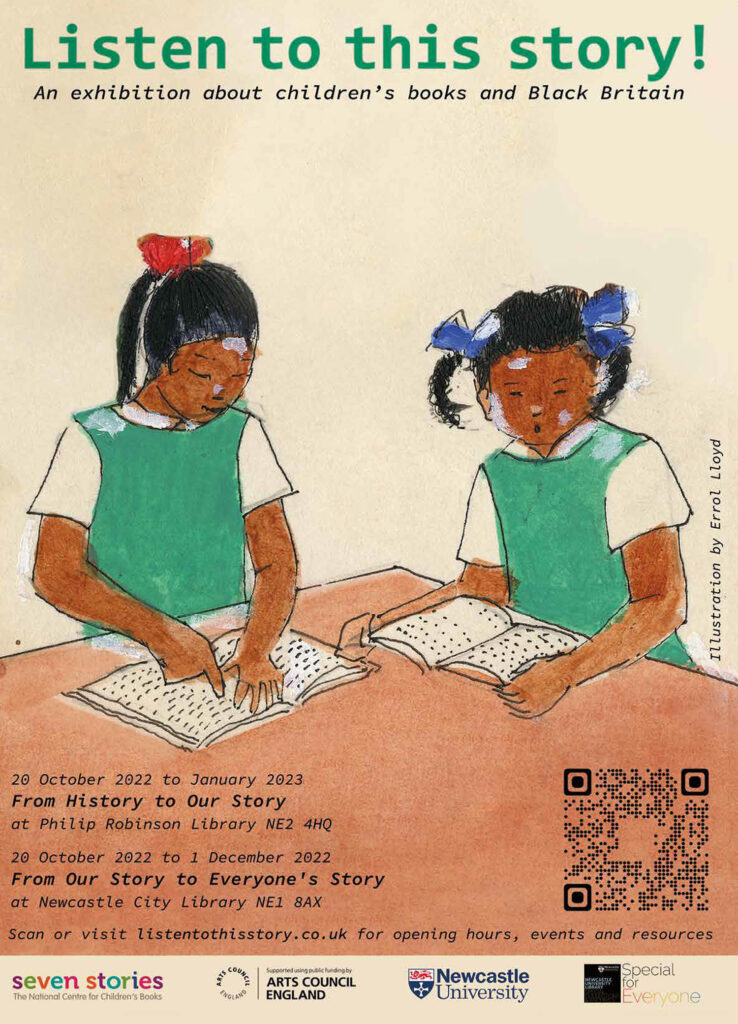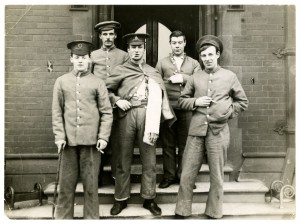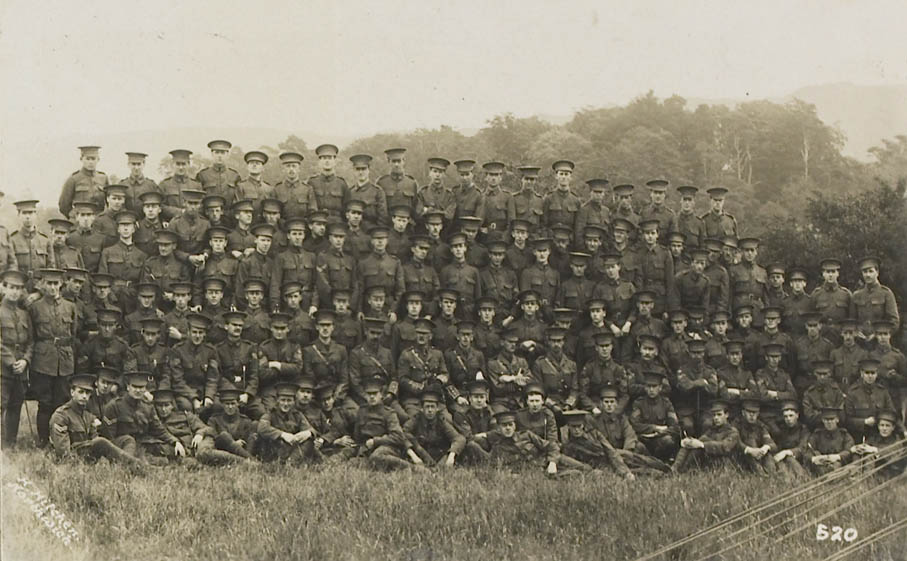Approximately 35 years after Akyaaba Addai-Sebo – a Ghanaian-born activist – established Britain’s first-ever ‘Black History Month’, the UK continues to celebrate the achievements and contributions of Black people every October. This annual celebration aims to promote a better understanding of Black history, with events taking place all the way from London to Aberdeen this year.
To coincide with this important month, Newcastle Robinson Library has collaborated with Seven Stories to host a city-wide exhibition on Black Britain and children’s literature. Embodying the message, ‘Listen to This Story: From History to Our Story’, the exhibition features some of the most interesting picture books, nursery rhymes and illustrations, told from the material within Newcastle University’s Special Collections and Archives. The exhibition is running from 20th October 2022 – January 2023, on Level 2, Special Collections and Archives exhibition space, Philip Robinson Library – free and open to all.
Analysing these archived children’s works has enabled us to look back over centuries of British literary history, allowing us to present a unique insight into how race relations have changed within the UK. Many of the books show how, historically, literature for young people has played a prominent role in transferring problematic ideas about race and power. Indeed, it becomes clear that texts even for the very youngest of readers, such as ABC books and nursery rhymes, have depicted non-white people in derogatory and stereotypical ways.
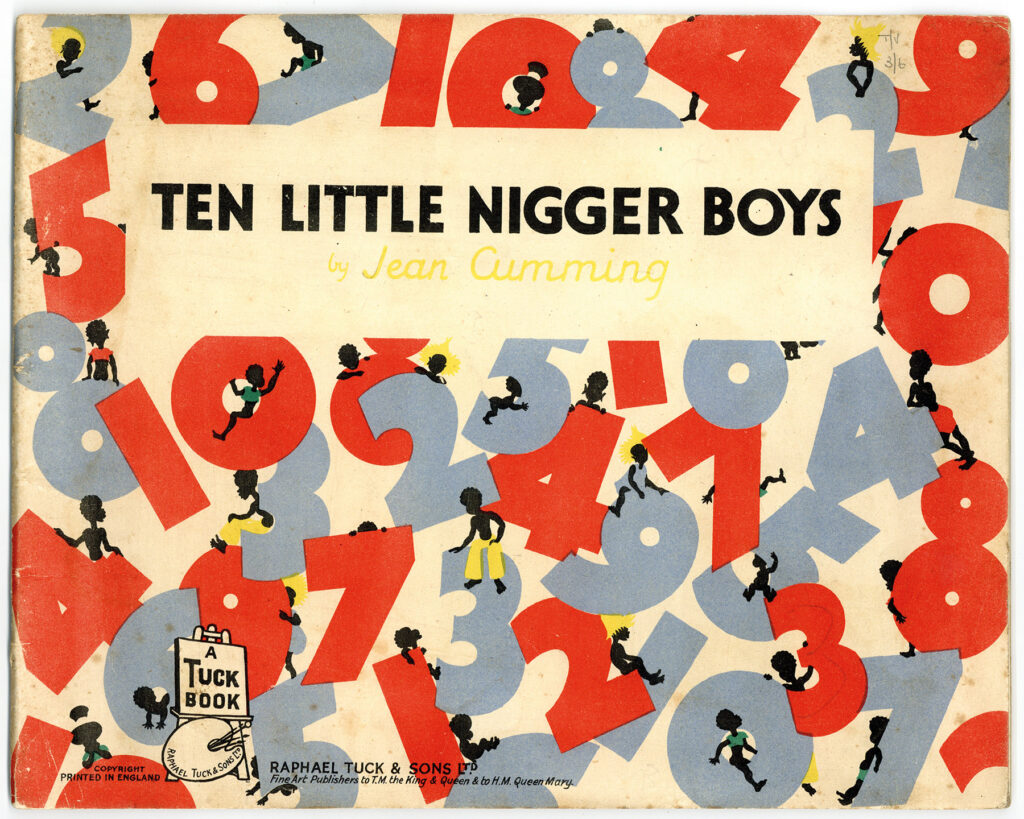
In a similar way, we can see that young people’s texts also presented people of colour as being white children’s ‘play-things’, such as toys, dolls, and gnomes. Presenting Black people like this was historically used to justify white oppression as it effectively demonstrated people of colour as needing parental care and governance.
An example of this can be seen in William Nicholson’s The Pirate Twins (1929). In which, Nicholson presents two childlike pirates; miniature Black people who are cared for (and controlled) by a young white girl called Mary.
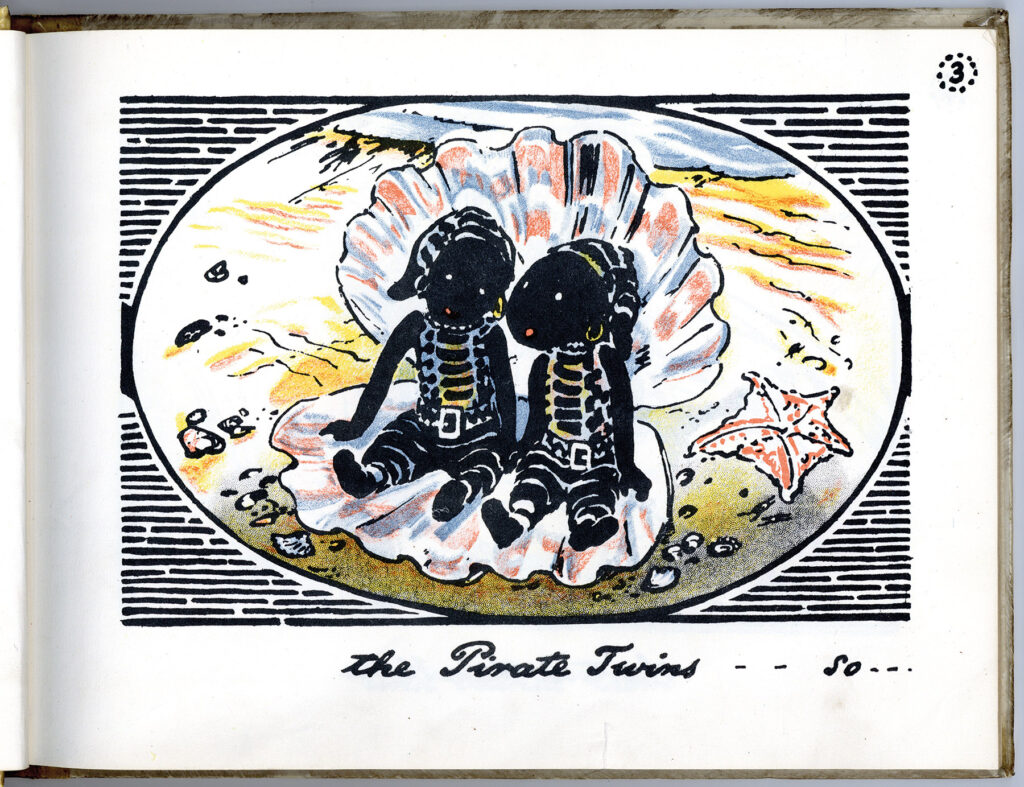
These dehumanising caricatures became so normalised in British society that they could be found not only in children’s books but on postcards, perfume bottles, games, and jam jar stickers (to name but a few examples). They worked to elevate Eurocentric, white standards and devalue Black individuals, cultures, features and histories.
As a way to counteract and resist these harmful depictions, many authors, publicists and illustrators worked hard to create humanising stories which normalised and celebrated Black people.
It is clear, then, that a lot of progress has been made in the world of children’s literature.
However, with only 15% of published children’s books featuring a character of colour in 2020, we still have a long way to go to ensure that everybody is represented equally!
Written by exhibition placement student, Ella Fothergill.
We have sought to ensure that the content of this blog post complies with UK copyright law. Please note however, that we have been unable to ascertain the rights holders of some of the images used. If you are concerned that there may have been a breach of your intellectual property rights, please contact us with the details of the image(s) concerned at libraryhelp@ncl.ac.uk and we will have the specified image(s) taken down from the blog post.

